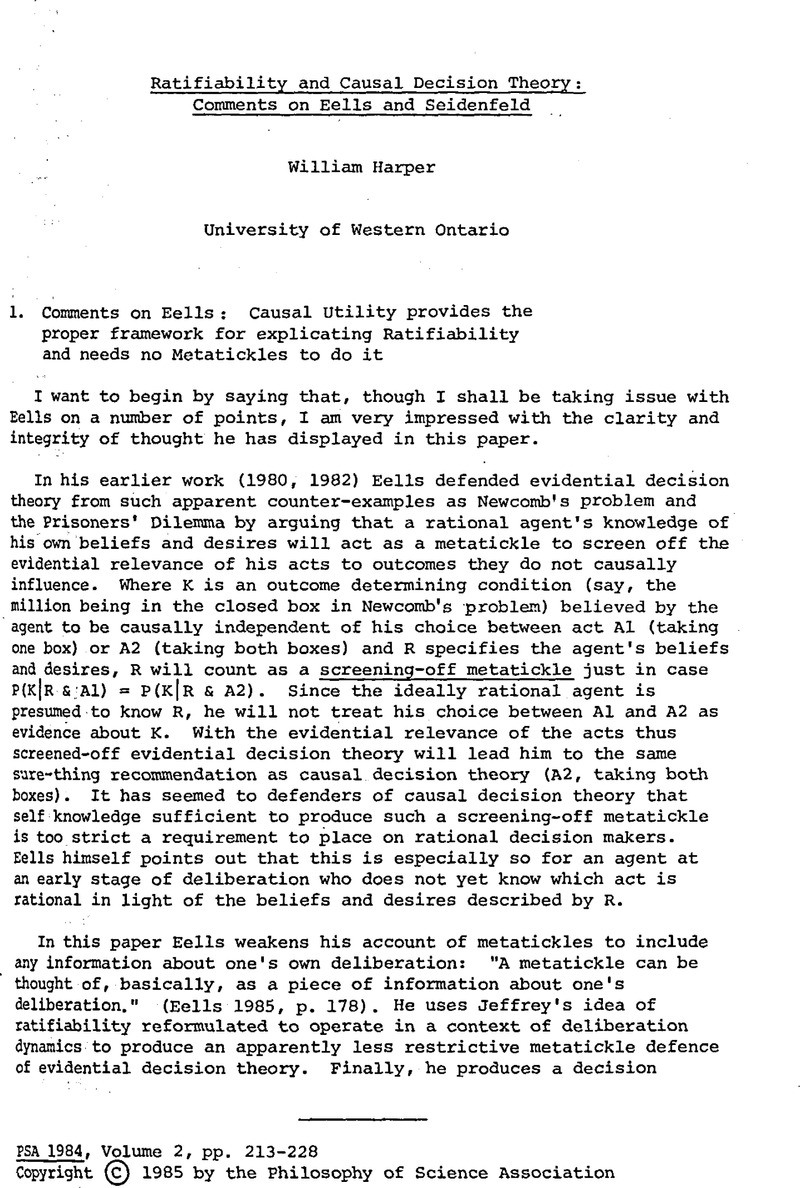Crossref Citations
This article has been cited by the following publications. This list is generated based on data provided by Crossref.
Skyrms, Brian
1986.
Deliberational equilibria.
Topoi,
Vol. 5,
Issue. 1,
p.
59.
Maher, Patrick
1990.
Symptomatic Acts and the Value of Evidence in Causal Decision Theory.
Philosophy of Science,
Vol. 57,
Issue. 3,
p.
479.
Hare, Caspar
and
Hedden, Brian
2016.
Self‐Reinforcing and Self‐Frustrating Decisions.
Noûs,
Vol. 50,
Issue. 3,
p.
604.





